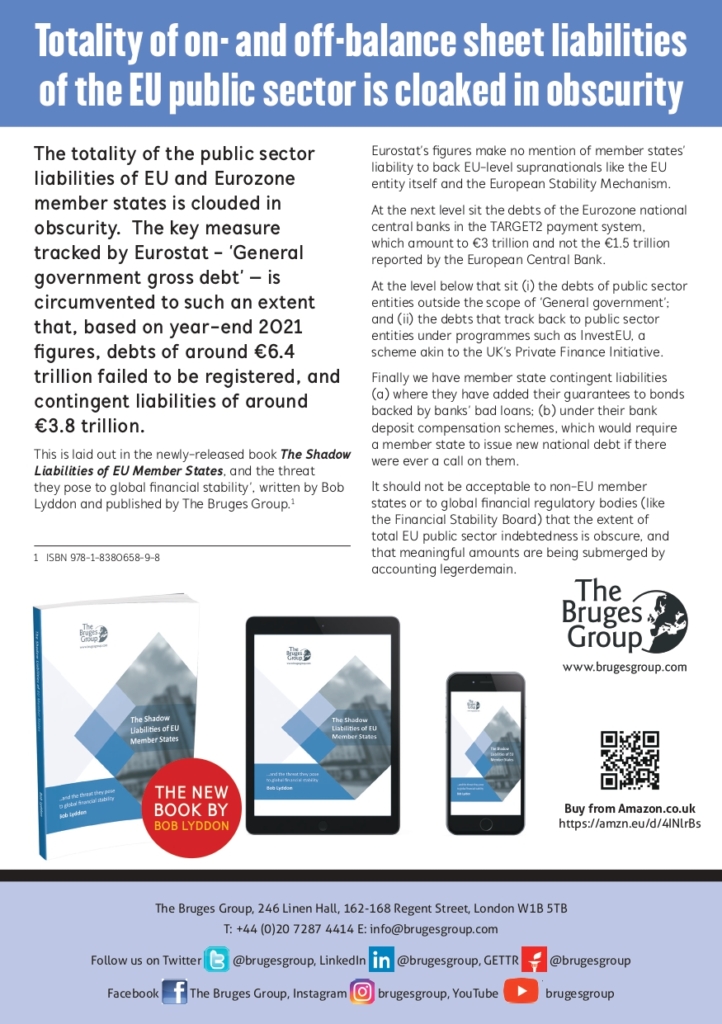Published on 29th May 2023
The totality of the public sector liabilities of EU and Eurozone member states is clouded in obscurity. The key measure tracked by Eurostat – ‘General government gross debt’ – is circumvented to such an extent that, based on year-end 2021 figures, debts of around €6.4 trillion failed to be registered, and contingent liabilities of around €3.8 trillion.
This is laid out in the newly-released book ‘The shadow liabilities of EU Member States, and the threat they pose to global financial stability’, written by Bob Lyddon and published by The Bruges Group.[1]
The most egregious example is the absence from Eurostat’s figures of any mention of member states’ liability to back EU-level supranationals like the EU entity itself and the European Stability Mechanism, which have debts that the member states are liable for.
At the next level sit the debts of the Eurozone central banks in the TARGET2 payment system, which amount to €3 trillion and not the €1.5 trillion reported by the European Central Bank.
Then there are two areas where no global figures are available (i) the debts of the public sector entities falling outside the scope of ‘General government’; and (ii) the debts that track back to public sector entities under programmes such as InvestEU: these schemes are like the UK’s Private Finance Initiative where the debt is disguised because the public sector entity has signed a commercial contract and not a financing contract. It does not then have to record the debt as a liability on its balance sheet.
The pivotal institution for these programmes is the European Investment Fund or EIF, a subsidiary of the European Investment Bank: the EIF does not even disclose in its accounts the nominal value of the guarantees and undertakings it has made. These would be off-balance sheet items anyway, but the EIF has taken this one step further – its business is off-annual report as well. With the EIF not disclosing the amount of its own involvement, it does not disclose the total indebtedness of the projects it is supporting either.
There are two areas where it was not possible to determine figures at all, and which for sure will add to the missing amount of debts (already around €6.4 trillion), and the missing amount of contingent liabilities (€3.8 trillion).
The first is where EU member states – and mainly Italy, Greece and Cyprus – have guaranteed bonds issued by companies that have bought bad loans from commercial banks. The same commercial bank buys these bonds back and thereby reduces the amount of capital it has to hold behind what is substantially the same asset, an outrageous example of undermining global regulations.
The second is where EU member states have a compensation fund for depositors in banks in case the bank should fail. The fund has no money in it and the pay-out would require the member state to raise new debt. The risk of this happening is in line with the volume of bad assets held in the country’s banking system and the weakness of the banks’ capital positions.
It should not be acceptable to non-EU member states or to global financial regulatory bodies (like the Financial Stability Board) that the extent of total EU indebtedness is obscure, and that meaningful amounts are being submerged by accounting legerdemain.
[1] ISBN 978-1-8380658-9-8

